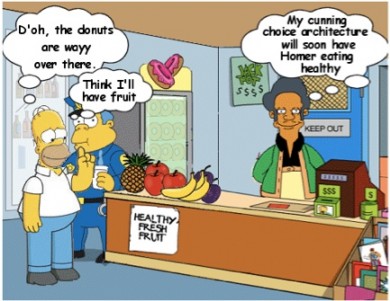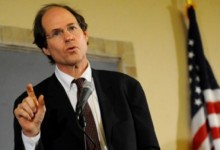As we closed the first decade of this century, Elephants entered the scene of Organizational Change Management, but at the same time our profession became more actionable. After decades of literature that mainly explained the process of change, the focus is now on how we can shape our environment.
Instead of laying the full responsibility for change in the hands of the leaders of our organizations, we now see a shift of attention towards things that are within the reach of everyone.
In a recent book called Nudge: Improving Decisions About Health, Wealth, and Happiness, economist Richard Thaler and legal scholar Cass Sunstein explore the psychology of our every day decision making and argue that we make poor decisions due to the architecture of how choices are presented to us.
Choice architecture is the careful design of the environments in which people make choices. According to Thaler:
“If anything you do influences the way people choose, then you are a choice architect. Choice architects must choose something. You have to meddle. For example, you can’t design a neutral building. There is no such thing. A building must have doors, elevators, restrooms. All of these details influence choices people make.“
Question: why on earth should you care about architecture as an organizational change practioner?
Answer: Because every interaction you have with your target group is an intervention – like it or not. Every time you interact you are shaping the response unknowingly.
There are three key features about choice architecture that you need to manage:
1. The Default “Default is what happens if you do nothing, such as leaving your computer unused until the screen saver appears” Thaler says. “The main lesson from psychology on this is that default options are sticky. Whatever you choose as the default has a very good chance of being selected. If you are the choice architect, you need to spend a lot of time thinking about what those default options should be.”
2. Feedback People respond to feedback; for instance, someone designed light bulbs that glow darker shades of red as homes use higher levels of energy. According to the authors, such devices helped reduce energy use in peak periods by 40 percent in Southern California.
3. Expect Error By expecting error, the authors point to the design of the Paris subway card, which allows users to insert it into an electronic turnstile in any of four ways to gain entrance to the subway. “Compare that to exiting the parking garages of Chicago,” they say, “You have to put your credit card in and there are four possible ways up, down, left, right and exactly one works. This is the difference between good and bad design.”
Remember: you are no longer an ‘organizational-change-management-theory-brainiac’. From the moment you take action, you are a Choice Architect!





Pingback: Luc’s Thoughts on Organizational Change » Gamers Will Save Our Economy (Part 2)()
Pingback: Gamers Will Save Our Economy (Part 4) | Reply-MC()